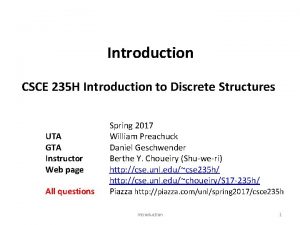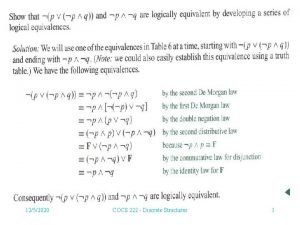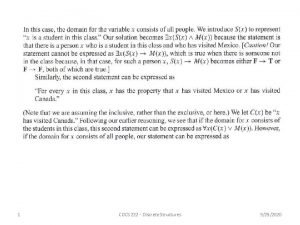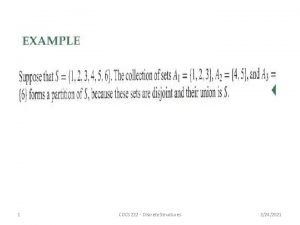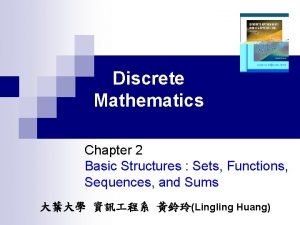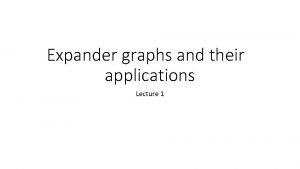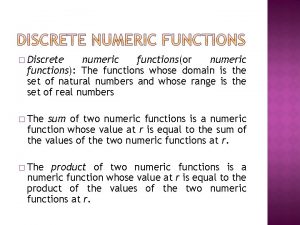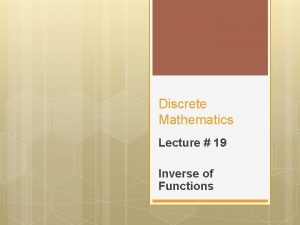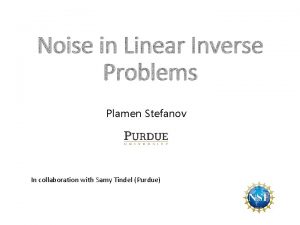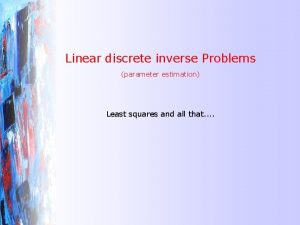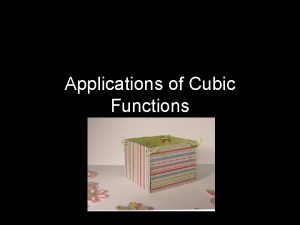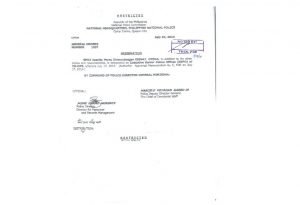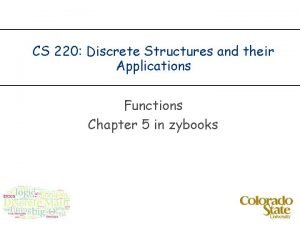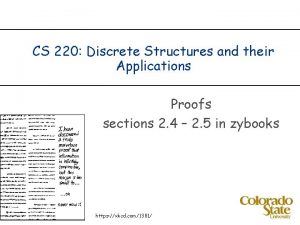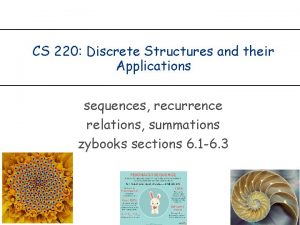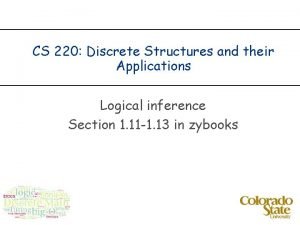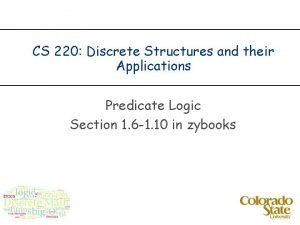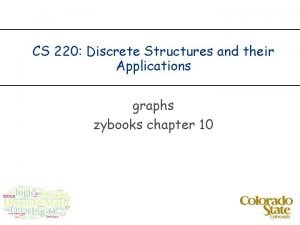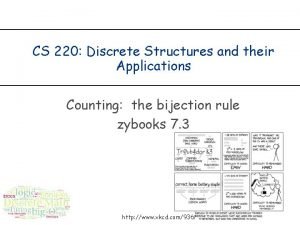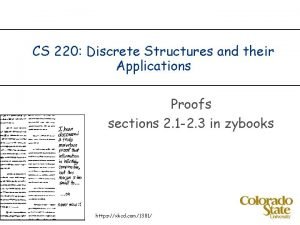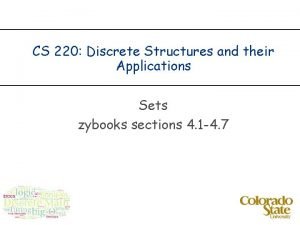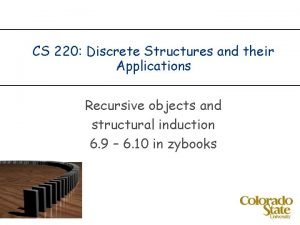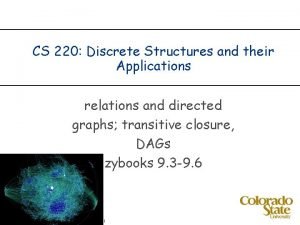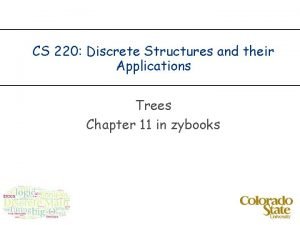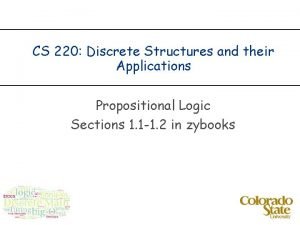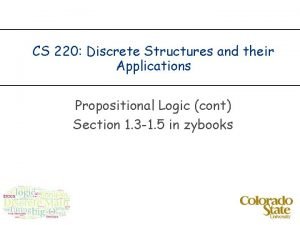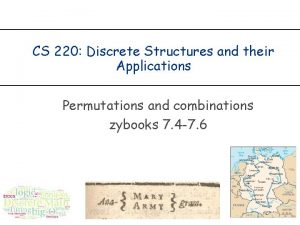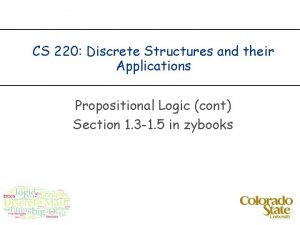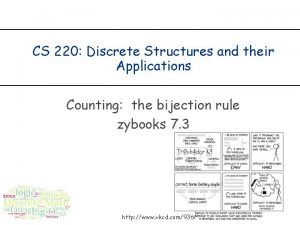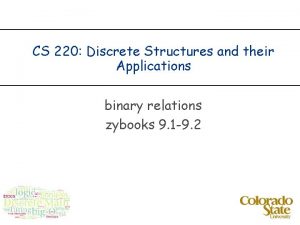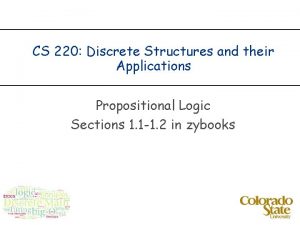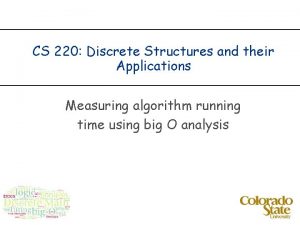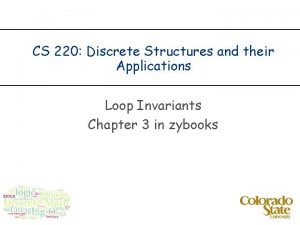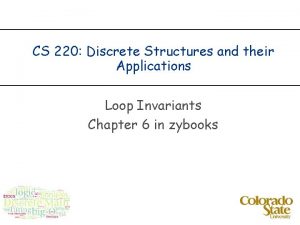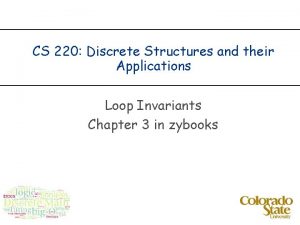CS 220 Discrete Structures and their Applications Functions


































- Slides: 34

CS 220: Discrete Structures and their Applications Functions Chapter 5 in zybooks

Functions A function maps elements from one set X to elements of another set Y. A Brian Drew Alan Ben domain X = {Brian, Drew, Alan, Ben} B C D range: {A, B, D} F target Y = {A, B, C, D, F} The range contains the target values that the function maps to

definition Let X and Y be nonempty sets. A function from X to Y is an assignment of exactly one element of Y to each element of X. Notation: f: X → Y, f(x) = y Specifying a function: Formula: f(x) = x + 1 Explicit specification: n n A Brian Drew Alan Ben B C D F

definition A function f that maps elements of a set X to elements of a set Y, is a subset of X × Y such that for every x ∈ X, there is exactly one y ∈ Y for which (x, y) ∈ f. The fact that f maps x to y (or (x, y) ∈ f) is denoted as f(x) = y. f: X → Y X - the domain of f Y - the target of f The range of f: { y : (x, y) ∈ f, for some x ∈ X } same as: { y : f(x)=y, for some x ∈ X } It is a subset of the target.

functions One of these diagrams does not represent a valid function. domain, target, range?

Examples Let f be the function that assigns the last two bits of a binary bit string of length >= 2. For example: f(11010) = 10 What is the: Domain, target, and range? n

The floor function rounds x down to the closest integer less than or equal to x. floor: R → Z floor(x) = the largest integer y such that y ≤ x. Notation: floor(x)=�x� Examples: � 4. 32�=4 � − 4. 32�=− 5 � 4�=4 �− 4�=− 4

The ceiling function rounds x up to the closest integer greater than or equal to x. ceiling: R → Z ceiling(x) = the smallest integer y such that x ≤ y. Notation: ceiling(x)=�x� Examples: � 4. 32� =5 � − 4. 32�=− 4 � 4�=4 �− 4�=− 4

Floor or ceiling? A baker is packaging cookies in boxes of 8. He has y cookies to put into boxes. How many boxes can he sell?

one-to-one functions A function f is said to be one-to-one or injective if and only if x 1 ≠ x 2 implies that f(x 1) ≠ f(x 2) for all x 1 and x 2 in the domain of f. Example: 1 2 3 4 … 9 … 16

one-to-one functions A function f is said to be one-to-one or injective if and only if x 1 ≠ x 2 implies that f(x 1) ≠ f(x 2) for all x 1 and x 2 in the domain of f. what about f(x) = x 2 with the domain Z ? what about f(x) = x 2 with the domain Z+?

onto functions A function f: X → Y is said to be onto or surjective if and only if for every y in Y there is an x in X with f(x) = y. In other words: its range equals its target. Are these functions onto? The function f : {a, b, c, d} → {1, 2, 3} defined by f(a) = 3, f(b) = 2, f(c) = 1 and f(d) = 3 The square function with the domain of Z+ The function f(x) = x + 1 on Z n n n

bijections A function f is a one-to-one correspondence, or a bijection, if it is both one-to-one and onto. Are these functions one-to-one correspondences? The function f : {a, b, c, d} → {1, 2, 3} defined by f(a) = 3, f(b) = 2, f(c) = 1 and f(d) = 3 The square function with the domain of Z+ The function f(x) = x + 1 on Z n n n

onto/one-to-one/bijections Consider f : A → X If f is onto, then for every element in the target, there is at least one element in the domain so |A| ≥ |X|. If f is one-to-one, then for every element in the domain, there is a at least one element in the target: |A| ≤ |X|. If f is a bijection: |A| = |X|.

Inverse functions We want to define the inverse of a function f: a function f-1 that “undoes” the action of f. Example: the square root undoes the action of f(x) = x 2. What properties does f need to have for an inverse to exist? one-to-one? onto? n n

Inverse functions Let f: X → Y be a bijection. The inverse of f is the function f-1 : Y → X that assigns to an element y in Y the element x in X such that f(x) = y, i. e. , f− 1(y) = x when f(x) = y. f y=f(x) x=f-1(y) X Y f− 1

Inverse functions Let f: X → Y be a bijection. The inverse of f is the function f-1 : Y → X that assigns to an element y in Y the element x in X such that f(x) = y, i. e. , f− 1(y) = x when f(x) = y. Do these functions have an inverse?

Inverse functions Let f: X → Y be a bijection. The inverse of f is the function f-1 : Y → X that assigns to an element y in Y the element x in X such that f(x) = y, i. e. , f− 1(y) = x when f(x) = y. An alternative definition: f-1 = { (y, x) : (x, y) ∈ f }.

Inverse functions Let f: X → Y be a bijection. The inverse of f is the function f-1 : Y → X that assigns to an element y in Y the element x in X such that f(x) = y, i. e. , f− 1(y) = x when f(x) = y. Example: Let f : Z → Z be f(x) = x + 1. Is f invertible? What’s the inverse? n

Inverse functions Are the following functions invertible? 3 3 ² f: {0, 1} →{0, 1}. f takes the input string and reverses the bits. For example, f(011) = 110. 3 3 ² f: {0, 1} →{0, 1}. f takes the input string x, removing the first bit of x, and adding the bit to the end of x. For example, f(011) = 110. 3 3 ² f: {0, 1} →{0, 1}. f takes the input string and replaces the first bit by 1. For example, f(001) = 101 and f(110) = 110.

Composition of functions Let f and g be functions f: X → Y and g: Y → Z. The composition of g with f, denoted g� f, is the function (g� f) : X → Z, such that (g� f)(x) = g(f(x)) for all x ∈ X. g f X Y g� f Z

Composition of functions Order of composition matters! Let f(x) = 2 x + 3, g(x) = 3 x + 2 (f� g)(x) = f(g(x)) = f(3 x + 2) = 2(3 x + 2) + 3 = 6 x + 7 (g� f)(x) = g(f(x)) = g(2 x + 3) = 3(2 x + 3) + 2 = 6 x + 11

Composition of functions What is (f-1� f)(x) and (f� f-1)(y) ?

The identity function on A, denoted IA: A → A, is defined as IA(a) = a, for all a ∈ A. The identity function always maps a set onto itself and maps every element to itself. If a function f from A to B has an inverse, then f composed with its inverse is the identity function. If f(a) = b, then f-1(b) = a, and (ff-1� f)(a) = f-1(f(a)) = f-1(b) = a. Let f: A → B be a bijection. Then f-1� f = IA and f� f-1 = IB.

increasing/decreasing functions A function f is said to be strictly increasing if whenever x 1 < x 2, then f(x 1) < f(x 2). A function f is said to be strictly decreasing if whenever x 1 < x 2, then f(x 1) > f(x 2). Is floor increasing? strictly increasing? Is square (when restricted to positive numbers) increasing? strictly increasing?

increasing functions A strictly increasing function is one-to-one. Is “increasing” a sufficient condition? (i. e. is an increasing function one-to-one? )

Cartesian products and functions A function with multiple arguments has a cartesian product as its domain. Example: min maps R x R to R min(5. 3, 10) = 5. 3 n

exponents and logarithms The exponential function expb : R → R+ is defined as: expb(x)=bx where b is a positive real number and b ≠ 1. The parameter b is called the base of the exponent. The input x is called the exponent. Properties of exponents:

the logarithm function The exponential function is one-to-one and onto, and therefore has an inverse. The logarithm function is the inverse of the exponential function. For real number b > 0 and b ≠ 1, logb: R+ → R is defined as: bx=y ⇔ logby=x The parameter b is called the base of the logarithm

dividing chocolates Ingrid has a bag with n chocolates, where n > 0. Ingrid meets a friend and splits her chocolates into two evenly sized piles and gives her friend the chocolates in one of the piles and puts the rest in her bag. Then she meets another friend and splits her chocolates again. Every time she meets a friend, she shares half of her chocolates with the friend. How many friends can she meet and share half her chocolates before she is down to one chocolate in her bag?

dividing chocolates Ingrid has a bag with n chocolates, where n > 0. Ingrid meets a friend and splits her chocolates into two evenly sized piles and gives her friend the chocolates in one of the piles and puts the rest in her bag. Then she meets another friend and splits her chocolates again. Every time she meets a friend, she shares half of her chocolates with the friend. How many friends can she meet and share half her chocolates before she is down to one chocolate in her bag? First, consider the case where n is a power of 2, i. e. n=2 k

dividing chocolates What if the number of chocolates is not a power of 2? At some point, Ingrid will have an odd number of chocolates, and she needs to choose whether to take the smaller or larger half.

dividing chocolates Theorem: Dividing piles and the logarithm function. Let n and b be positive integers with b > 1. Consider a process in which in each step, n is replaced with �n/b�until n < b. The process takes �logbn�steps. If instead in each step, n is replaced with �n/b�until n < b, the process takes �logbn�steps.

Logarithms and programming Binary search define the steps, explain how many steps Merge sort define the steps, explain how many steps Quick sort?
 Homologous structures
Homologous structures Absorption law logic equivalence
Absorption law logic equivalence 2110200
2110200 Discrete math
Discrete math Discrete computational structures
Discrete computational structures Discrete structures
Discrete structures Cs 584
Cs 584 Discrete structures
Discrete structures Propositional logic puzzles
Propositional logic puzzles Susanna s epp
Susanna s epp Floor and ceiling discrete math
Floor and ceiling discrete math N-ary relation
N-ary relation Expander graphs and their applications
Expander graphs and their applications Solid insulating materials and their applications
Solid insulating materials and their applications Limbic system structures and functions
Limbic system structures and functions Cells graphic organizer
Cells graphic organizer Function of amygdala in limbic system
Function of amygdala in limbic system Cell graphic organizer
Cell graphic organizer Numeric function in discrete mathematics
Numeric function in discrete mathematics Inverse functions linear discrete
Inverse functions linear discrete Boolean function in discrete mathematics
Boolean function in discrete mathematics Inverse functions linear discrete
Inverse functions linear discrete Inverse functions linear discrete
Inverse functions linear discrete Function of minerals
Function of minerals Examples of macronutrients elements
Examples of macronutrients elements Real life situation piecewise function
Real life situation piecewise function Applications of cubic functions
Applications of cubic functions The usa
The usa Neurotransmitters and their functions
Neurotransmitters and their functions What is pnp organizational structure
What is pnp organizational structure Part of the flower that contains pollen
Part of the flower that contains pollen Five parts of a plant
Five parts of a plant Microscope parts function
Microscope parts function Two main functions of root
Two main functions of root Bean seed and its parts
Bean seed and its parts



